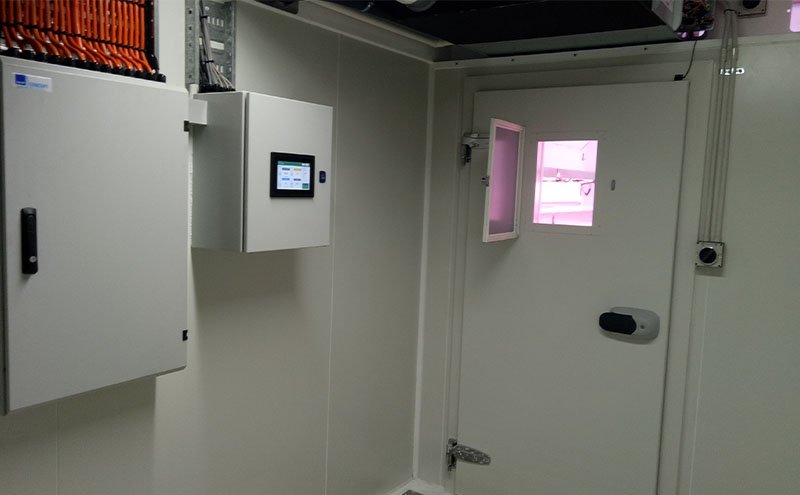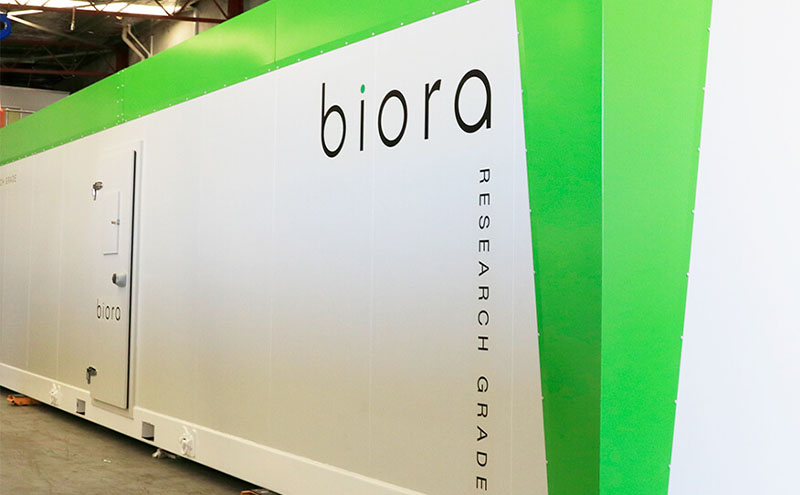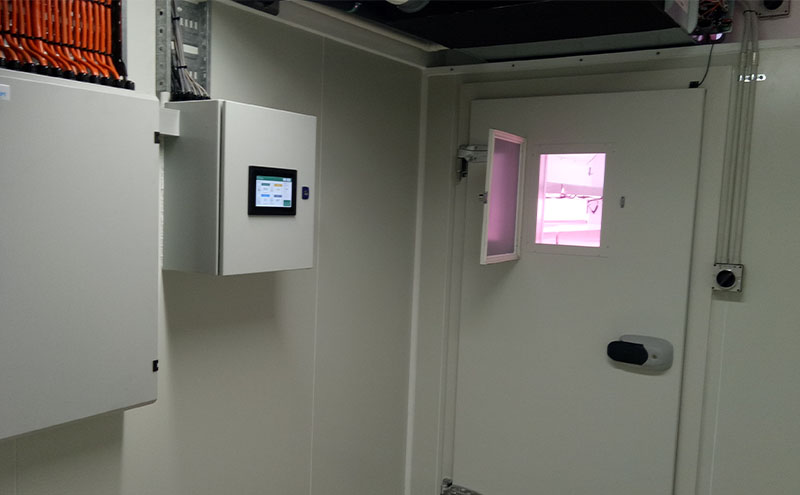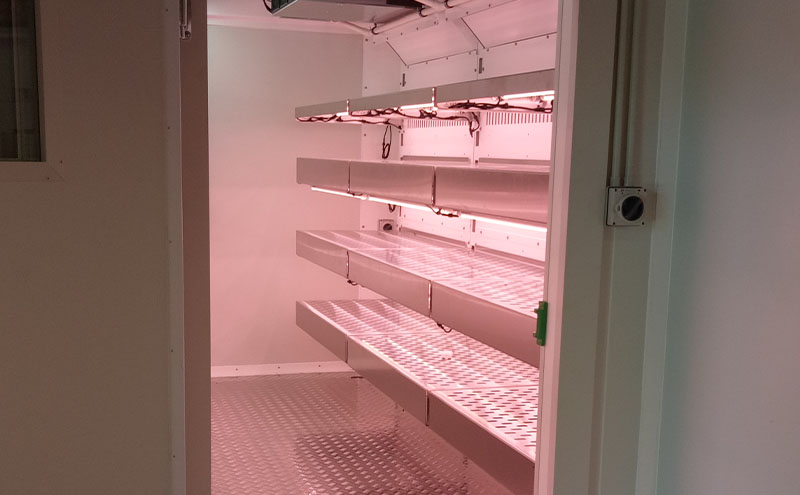An Australian University leads game-changing research into propagation using plant tissue culture initiatives with the help of Biora Grow Rooms.
Plant tissue culture research is not uncommon. It has been utilised across different industries, such as food, forestry and horticulture, to address areas where traditional propagation techniques fall short. Commonly focused on fruits such as apples, peaches, cherries, and plums, tissue culture research can revolutionise such a vital industry.
With the world’s population expected to double by 2050 and plant disease being a significant threat to food security, reducing yield, and negatively impacting global food production. Finding solutions to cope with these challenges has been a priority at this Australian University. The commercial viability, combined with the need to protect sustainable food sources, drove investment in tissue culture research for plant propagation.
Key Takeaways
- Leading tissue culture research into propagation aims to make the industry more sustainable
- Portable plant tissue culture rooms provide a viable alternative to built-in laboratories for universities
- Customisable and technology advanced designs are driving the future of plant research across Australia
Site Challenges and Solutions
Challenges
- A research-grade tissue culture room to provide perfect conditions to support shoot and root growth of international and regional plant varieties
- Remotely monitor and control the internal environments from within the university
- LED Lighting
Solutions
- Biora Plant Tissue Culture Room
- Remote Monitoring a Plant Tissue Culture Room
- LED Lighting
Designing a Portable Walk-In Grow Room for Tissue Culture Research
The University required a plant tissue culture room to extend their research capabilities. The portable grow room provided an ideal solution, meeting rigid lab requirements without the added negatives of a permanent building.
Biora’s lead engineer, Steve Fooladvand, based in Perth, Western Australia worked closely with the research team. Together, they designed a tissue culture room that would reflect and replicate their exact requirements.
The tissue culture chamber is located on the grounds at the University. Because of its location, the tissue culture chamber needed to be robust enough to combat local weather conditions without impacting the internal set parameters. On the flip side, it needed to be light enough to be portable.
The Plant Tissue Culture Room's Structure
The plant tissue culture room comprises two identical, but independently-controlled sections, separated by an airlock. Sitting at over 12 metres in length, the steel structure contains insulated panelling, lifting points and forklift slots for portability, and a rigid base with no requirement for footings.
Separating the two research rooms sits the pressurised airlock, with an air curtain at the main entrance. This building element assists with the prevention of cross-contamination between rooms using HEPA filtered air and low energy fans, with minimal airflow disturbance. It also contained a highly accessible mechanical area, which allowed routine maintenance to occur without contaminating the research areas.


Heating and Cooling a Tissue Culture Room
The design featured a specialised Heating, Ventilating, and Air Conditioning (HVAC) system, built into its structure. Pressurised wall plenums allow for even airflow and uniform temperature across the entire room. Moreover, specially-designed perforated stainless shelves, allow for equal amounts of vertical airflow between the racks minimising the formation of condensation on samples and equipment within the chamber. At the same time, sensors track data and continuously monitor the internal conditions.
Custom Designed Heat Recovery System
A specialised Heat Recovery System (HRS) developed to improve the efficiency of the HVAC was incorporated into the design. By using expelled internal air to pre-condition incoming fresh air, the HRS assists with temperature uniformity and ultimately reducing the overall load on the air conditioning system.
HMI Control Panel
Conditions within each section of the plant tissue culture room are accessible using Biora’s HMI Control Panel. A user-friendly touchscreen located within the airlock provided researchers with unique, secure access. Information on the locally hosted control panel can be accessed via computer, tablet or smartphone.

Remote Monitoring a Plant Tissue Culture Room
Technology is changing the way research is conducted, and one primary influencer has been remote monitoring. Accessing data from within a plant tissue culture room or laboratory without physically entering and checking the chamber provides more flexibility, improve response times, and reduces unnecessary interruptions. Due to the nature of the testing, sustainability and replicability of specific growth environments were crucial to the University.
Biora’s HMI control technology provides security and real-time monitoring. Through this system, researchers can control and monitor the following settings at the chamber and remotely;
- Temperature and humidity levels
- Airflow and internal pressure
- Lighting
- Oxygen and carbon dioxide levels, measured by internal Aura gas sensors
Additional features include simple USB downloading of historical data and a remote interface, remote alarm warning with e-mail notifications, systems monitoring and programming, and password-protected individual user profiles with varying levels of access security.
LED Lighting
Lighting within the portable plant tissue culture room was chosen to reflect the leading laboratory to ensure consistency in research.
The research utilised two LED lights with differing intensity and spectrum represented distinct stages of the testing cycle. One light, with a B 14%, G 16%, and R 53% spectrum, promoted strong vegetative and generative growth. The second light with a B 8%, G 2%, and R 65% spectrum supported vernalisation and rooting. Both led lights have a set spectrum and low intensity, which was ideal for tissue culture application.

Further to this, the LED lights are IP 64 rated (water and impact resistance) and easy to clean, which helps QAAFI maintain the chamber’s integrity and prevent contamination.
New developments in technology, together with local expertise, assisted the Australian University in the expansion of their current research into plant propagation. The research body was able to commission a custom plant tissue culture chamber to reflect the conditions of the current lab. As a result, researchers continue to make headway in the advancement of farming techniques.






